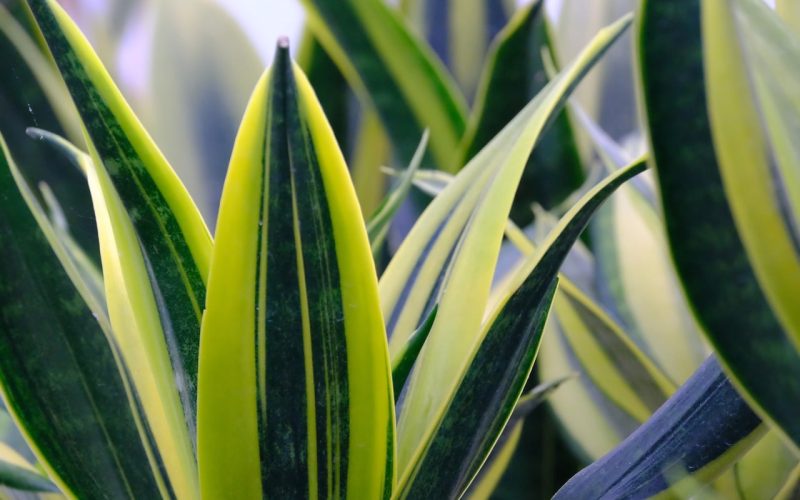The snake plant would be at the top of the list if there were such a thing as the most resilient plant.
These simple plants are known for enhancing your health and beautifying your garden.
Given how popular little houseplants are now, you must understand all there is to know about them and how to propagate them.
Here is everything you want to propagate snake plants in your house.
What to Know About Snake Plants
Sansevieria Trifasciata, sometimes known as the snake plant, is a native of Asia and Africa.
It is well known for its erect, sword-shaped evergreen leaves that nearly seem artificial.
Given their aesthetic appeal, ease of maintenance, and ability to thrive with little water, snake plants are often used as ornamental.
Although some plants may survive without attention for many weeks, it doesn’t imply you should.
Thanks to their architectural shape and strappy leaves, they will still seem vibrant.
They may also thrive under droughts and poor light conditions and rarely experience bug issues.
According to a NASA study, snake plants may help keep the air inside your house clean by eliminating contaminants like formaldehyde and benzene. They are one of the top 10 houseplants you can grow.
This plant is well known for being exceptionally drought-tolerant, yet too much water might be its downfall.
A well-drained potting mixture that doesn’t retain much water is ideal for snake plants.
The snake plant likes bright, indirect sunlight in its ideal environment.
However, if you leave it in a dark area, it can survive independently.
Some Sansevierias lose their vibrant colors in darkness, and taller jades may become lanky and floppy, although this isn’t typically a major issue.
When given the proper circumstances, a snake plant may produce beautiful blossoms.
These flowers are not very beautiful, but they come in big clusters and are often white with a greenish color.
Typically, the lovely flowery scent these tiny, tubular flowers release can enliven any space, particularly at night.
However, don’t count on a snake plant to bloom regularly; many tend to bloom occasionally without adhering to a schedule.
Tools For Snake Plant Propagation
With the right tools, snake plants may be easily propagated.
Since this plant is slightly different from any others you may have, you’ll probably need to use tools different from those you would typically use to trim and maintain your plants. The tools you need to have on hand are listed below.
Water Containers
You’ll need a container used as a rooting vessel to attempt water propagation.
Look for anything that will offer you enough space to drop the leaf into the water without bouncing off the edges.
Use transparent or green-tinted glass to let sunlight reach the emerging new roots.
Although it’s not required, this might hasten the rooting process.
Pots and Soil
Sometimes, you will need these materials, whether attempting soil or water propagation.
Maintaining snake plants in smaller pots is recommended since they don’t need much space or water and can develop without damp soil.
Snake plants’ soil in their native environments is very dry and well-drained.
To resemble that closely, you should use well-draining soil with enough perlite and coco husk pieces to allow your plants to breathe.
Rooting Hormone
Rooting hormone is necessary for the propagation of snake plants.
The rooting hormone is meant to assist snake plants in developing more quickly so that your cuttings may take root more quickly without the danger of withering or drying out before that. Snake plants grow exceedingly slowly.
Plant Shears
If you want to collect plant cuttings, you need a tool to cut them with.
Since snake plants often have broad, sturdy stems, short-bladed shears won’t cut them well.
Instead, use long, sharp shears that can cut through a leaf at least halfway.
You may use a recently sharpened kitchen or fabric scissors without such shears, provided the blades are rust-free.
Additionally, it’s crucial to refrain from using broken or potentially hazardous blades or scissors.
How to Propagate Snake Plant?
The possibilities for multiplying your snake plants are limited for those who love plants but lack access to test tubes, sophisticated equipment, and properly controlled settings.
Also, even if you know it takes a very long time for them to mature, the outcome is well worth the daily investment of a little effort. This is the procedure for propagating snake plants.
Gather Your Materials
First, gather all your propagation tools in one place so you can readily locate them.
A bucket of warm, soapy water, some cotton balls, and rubbing alcohol are all helpful to have on hand.
Additionally, it is an excellent time to disinfect everything. Rub rubbing alcohol on your shears, then wipe your water containers with rubbing alcohol.
Eliminating any surrounding bacteria greatly aids in maintaining the water’s cleanliness. Once it has dried, put new, clean water in your water container.
Clean the Leaf
The easiest step for propagating snake plants is this one. Even if you intend to remove more than one leaf for cuttings, clean the leaf you want to cut by dipping a cotton ball in warm, soapy water until it’s moist but not saturated.
Next, thoroughly clean each leaf from top to bottom before planning to cut it. Keep to the outer leaves, which are simpler to cut and clean.
You may trim it if the plant still seems balanced without it. Before making your cuts, let the leaves dry up.
Plan the Cuts
Knowing where to cut is the most challenging part of propagating snake plants.
This depends on several factors, including the type of snake plant you have, the age of the leaf, how much sunshine and water it receives, and the size of each leaf itself.
Aim for a higher place on the leaf where it starts to narrow while growing broad-leaved snake plants.
Your cutting will not grow as tall as the original plant at first, but it will be healthier.
It may concentrate on growth earlier since it needs less time to establish roots. If you want thinner leaves, go for the region directly before the plant’s base.
Make the Cuts
If the leaf on your snake plant is broader than two inches, you’ll need to do some difficult handiwork.
First, make a 45-degree angle cut through the leaf, starting at the highest point you planned to cut from and continuing downward until you reach the halfway point.
To take out the cutting, repeat on the other side. Smaller leaves, especially those under two inches broad, may be quickly snipped at the same 45-degree angle so that the cut completely penetrates the leaf.
If they are both in the same direction, you may need to make more than one snip.
Rooting Hormone
Your cuttings will need a boost now that they are separated from the parent plant so they can begin roots immediately.
The plant signals from the rooting hormone that it should concentrate on developing roots rather than growing taller.
Use a cotton swab or brush to pick up the powder or liquid rooting hormone, then gently dab it into the newly cut area at the base of the leaf you just removed.
Avoid packing it too heavily; most will naturally fall off, and plants only need a certain amount to fulfill their jobs.
Water Propagation Method
Insert your new snake plant cutting into a container of fresh, clean water that is full enough to cover the leaf cut. This procedure is used to propagate snake plants in water.
Since snake plants often get little water in the wild, avoid immersing the leaves more than halfway; doing so encourages rot.
The basic everyday upkeep comes next. Drain the water completely from the cutting container every day or two.
Clean the container, add new water, and then reinstall the cuttings. Cutting shouldn’t take more than a minute out of the water.
When propagated in water, a snake plant usually takes six to eight weeks to develop its initial roots, but it will take longer before you can pot it in soil.
Before potting, make sure there are at least a few longer, thicker roots.
Soil Propagation Method
The procedure for propagating snake plants in soil is somewhat different when growing snake plants in soil. You’ll need a pot almost filled with moist but not wet soil.
It must be flexible enough to be pressed into by the snake plant cutting without breaking or harming it.
When the snake plant cutting can support itself, plant it up and down in the ground approximately two inches deep.
After that, irrigate the area gently to allow the soil to settle. To avoid root rot, let any extra water fully drain out.
The water should be consistently wet for the first two weeks. During this period, avoid letting the soil dry, as this can harm the cutting.
Water only when the topsoil dries from the first two weeks until the eighth week.
Conclusion
Snake plants are a great choice because they are simple to grow and care for.
They are a diversified group of houseplants because there are so many distinct types to choose from.
Follow the methods above for propagating snake plants to have a huge supply by the next season.








